Yellow Garden Spider: Anatomy, Habitat, Diet. Can it Bite? is it Poisonous and can you Keep It as a Pet
The yellow garden spider (Argiope aurantia) is one of the most well-known spiders in North America. This species, which is also known as a yellow garden spider, has a bright yellow and black striped abdomen that makes it easy to identify. The yellow garden spider can be found throughout the world in tropical regions with warmer climates and spends its days on tall plants or trees waiting for prey to pass by below. When they feel threatened, their first line of defense is to play dead–which then leads many people to unknowingly crush them underfoot!
What is the Yellow Garden Spider?
The yellow garden spider is a type of orb-weaver that can be found all over the world. It’s also called an arachnid because it belongs to class Arachnida, order Araneae, and family Argiopidae. The yellow garden spider has eight eyes–four on its head (the other four are usually smaller) and four in front of its abdomen. Its body color ranges from yellow or greenish-gray with black stripes–making these spiders easy to identify!
The yellow garden spider spends the majority of its time hunting for prey on tall plants or trees. When it feels threatened, they’ll often play dead–which may lead many people to unknowingly kill them by crushing them! These spiders are well-known because they can be found in almost every region around the world and their colors make them easy to identify from other species that might look similar!
Does a Yellow Garden Spider Bite?
The yellow garden spider is not considered poisonous and normally will not bite you–though it does have potent neurotoxic venom. They’ll only use this to kill their prey, which includes insects (like butterflies), other arthropods, and small vertebrates like lizards! If the female of the species bites an individual as they’re trying to protect their eggs, then symptoms can range from mild pain or swelling at first to difficulty breathing by the end of a few hours.
Because these spiders are so well-known for playing dead when threatened with danger, many people will unknowingly crush them underfoot without even realizing what’s happened until later on in time! Because there isn’t any real way to stop that happening completely–if you have these spiders in your garden, it’s best to just let them be.
In North America, female garden spiders are typically larger than males and can grow up to one inch long! They’re also called ‘garden spiders’ because they live mostly on tall plants or trees waiting for prey below–which makes them easy to find when compared with other types of species that might look similar. When threatened by the danger the female will bite an individual as a way of protecting their eggs while the male spider often tries to run away from an altercation.
The female garden spider is usually more aggressive than its counterpart due to her size but both seem equally likely to play dead if threatened by predators (rather than fight). Due to the female’s larger size, she’ll often have a more potent neurotoxic venom than males of the species–which will only be used on prey that can’t fight back.
The yellow garden spider is not considered poisonous. If one of these spiders bites an individual as they’re protecting their egg sacs, then symptoms could range from mild pain or swelling at first to difficulty breathing by the end of few hours. The female yellow garden spiders are usually more aggressive than their male counterparts due to their larger size and prefer to live in tall plants or trees waiting for prey below–but both types seem equally likely to play dead if threatened instead of fighting back! When
Are Yellow Garden Spiders Dangerous?
The female garden spider is not considered poisonous but has a potent neurotoxic venom to use against its own predators. If one of these spiders bites an individual as they’re protecting their egg sacs, then symptoms could range from mild pain or swelling at first to difficulty breathing by the end of few hours. Males are generally less aggressive than females and prefer to play dead when threatened–but both types seem equally likely if you threaten them too much! When it comes down to it, North American female yellow garden spiders are usually larger in size and can grow up to one inch long while males tend to be smaller (though still sizeable).
No, female yellow garden spiders aren’t dangerous unless you happen upon her while she’s protecting her eggs.
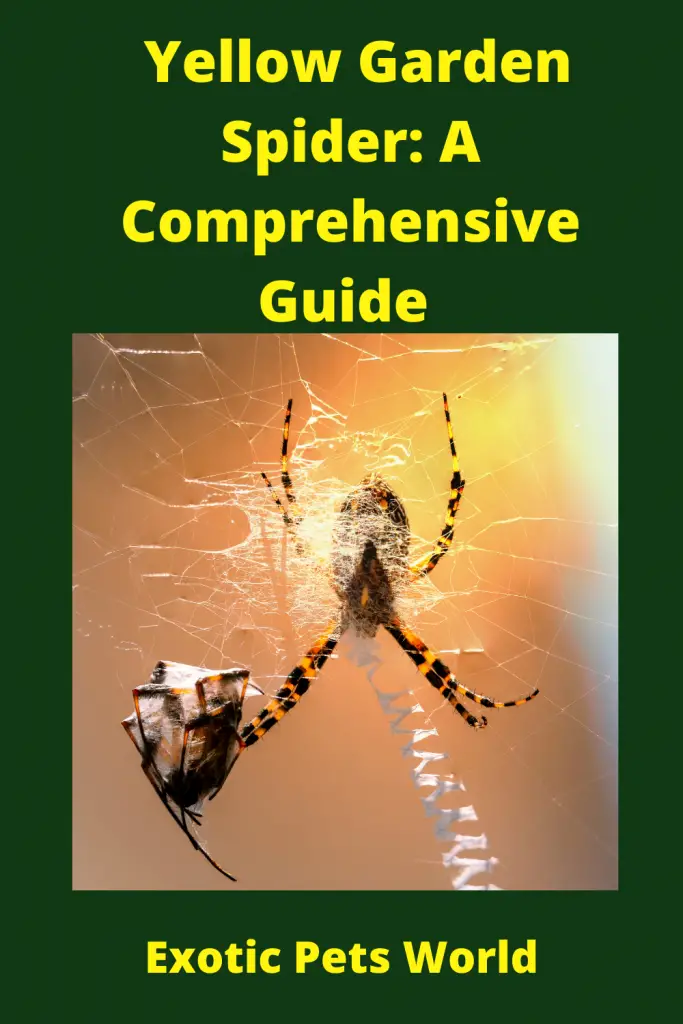
What Happens by a Garden Spider Bite?
The female yellow garden spider can bite you or sting you with her neurotoxic venom–which is only used when prey is not able to fight back. When this happens, symptoms include mild pain or swelling at first that could quickly worsen and evolve into difficulty breathing in a few hour’s time!
No one’s ever died from being bitten by female yellow garden spiders but some people have reported having serious complications (like temporary paralysis) after getting bit. Males are generally less aggressive than females and prefer the play dead strategy when threatened–but both types seem equally likely if they’re pushed too much! Female yellow garden spiders tend be larger in size than males which makes them easier to find and their bites more potent! No individual has ever been killed
How can I avoid being Bitten by a Garden Spider?
Don’t disturb female yellow garden spiders while they’re protecting their eggs–if you do, she might bite or sting. Males are sometimes less aggressive but both types will play dead when threatened! If the female is on a plant near your home and stretches across to get closer to her prey then it’s possible for her to fall onto someone below too (which could lead to being bitten).
The best way avoids getting bit by a female yellow garden spider would be to not disturb them if they’re guarding their egg sacs. The males tend to be smaller than females which makes them harder sometimes spot from afar so stay away from any lofty plants that have high ground cover around their base.
What to do if I am Bitten? (Garden Spiders Bite)
If you’re bitten by female garden spiders, then symptoms could range from mild pain or swelling at first to difficulty breathing in a few hour’s time. Take an antihistamine and call your doctor for any other questions that might arise!
Don’t let female yellow garden spider bites go untreated because they can be serious–especially if the victim is sensitive to neurotoxins like this one. If someone who’s been bitten doesn’t have access to medical attention quickly enough, then taking an antihistamine should do the trick but should still consult a physician as soon as possible afterward.
It’s usually best not disturb female yellow garden spiders while guarding their eggs.
Are Yellow Garden Spiders Poisonous to Dogs?
No female garden spiders are not poisonous to dogs. It is possible for female yellow garden spider bites to be serious, so it’s best if you don’t leave your dog outside without supervision because of the risk that they might come into contact with a female yellow garden spider and get bitten!
There have been reports where female yellow garden spiders created injections of neurotoxic venom that could potentially kill an animal–like a rat or kitten. If you’re worried about this happening then make sure there isn’t any vegetation near your home that has a high ground cover around its base as males tend to prefer shady spots like these. They’ll also try to stay close by their egg sacs too which means females will often stretch across nearby plants in order
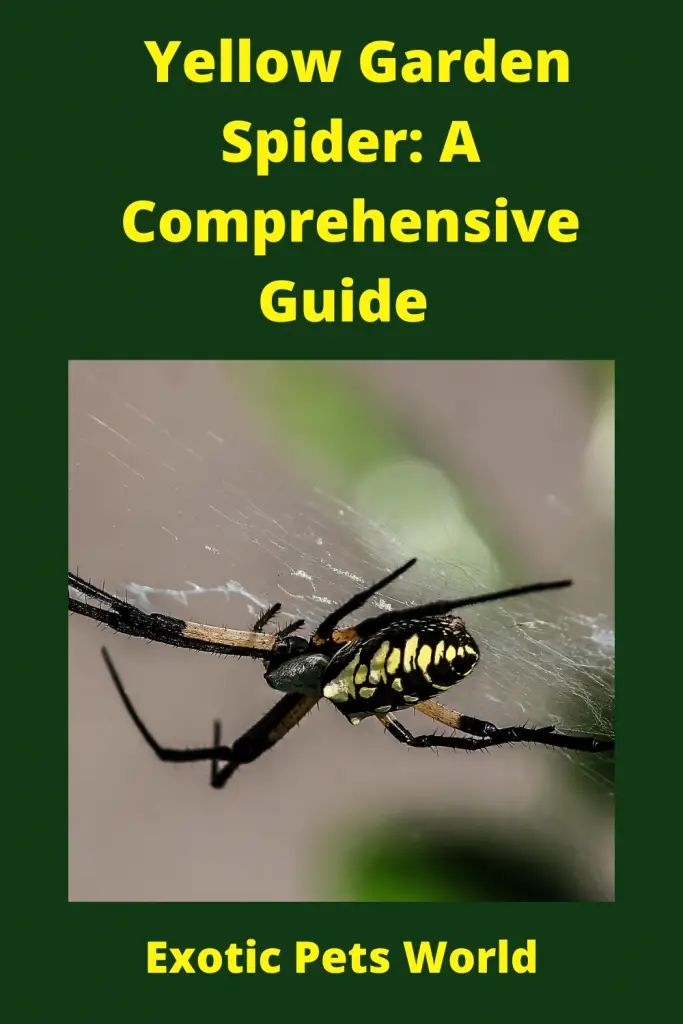
Why are Spiders important in nature, even if they can Bite Humans?
Spiders are important in nature because they provide us with food, pest control, and a place to live. Spiders aren’t always on the menu for most animals since female yellow garden spiders have neurotoxic venom that can be deadly–but some other species of spider might not be as harmful! A female yellow garden spider will usually inject this type of toxin when she feels threatened or if someone accidentally disturbs her while she’s guarding eggs so it’s best to avoid any high ground cover around plants near your home or tall plants inside too.
In order to make sure female yellow garden spiders don’t come into contact with pets (or people) indoors then you should keep all floors clear from debris like leaves and branches–since these are where they like to hide.
Keeping Garden Spiders as Pets
Can garden spiders be kept as pets? Some people might think that yellow garden spiders are too dangerous to have in their homes. However, they’re actually harmless if you leave them alone when not disturbing them and don’t try to handle the female with an egg sac!
If you want pet garden spiders then make sure there aren’t any plants or other ground cover around your house–since these can give male garden spiders a place to hide near females who will sometimes stretch across nearby branches looking for prey. Females also like shady spots so it’s best to avoid tall leave-covered plants inside too since these could provide some of this type of spider with shelter from animals that might otherwise eat them. If you find yourself outside without supervision then
Inside they prefer a large tank where they can hide, retreat and build a web.
How do Yellow Garden Spiders Mate?
Yellow garden spiders mate when the male spider becomes mature enough to search for a female that he’s interested in–usually after mating season. Males will also usually choose to try and find females who are guarding their eggs so they can be sure there’ll be more yellow garden spiders around in the future! Breeding is done through courtship and then they’ll insert the male’s pedipalp into the female’s epigynum–which could be located on her abdomen, neck, or face.
Aerial courtship is also possible even though this doesn’t happen often in yellow garden spiders because males will sometimes catch prey and offer it to females as a gift! Breeding can take place over the course of several hours and, afterward, the female will usually store sperm in her spermathecae–the sacs that are located on either side of their body. Breeding can happen again if a male is lucky enough to find another female yellow garden spider who’s guarding eggs!
The Breeding Habitat for Yellow Garden Spiders
Yellow garden spiders can be found in temperate habitats like North America and Europe. They’re also most commonly seen near gardens or fields that have high ground cover–like tall grass, shrubs, bushes, etc. Males will sometimes wait for females to show up on these plants before they mate with them which means it’s best not to disturb this type of spider if you see it on a plant near your home or inside–since this might result in the female injecting venom into whatever’s disturbing her.
Males, however, have to find females that are guarding their eggs so they’ll usually wait for them to stretch across plants before mating with them and then returning back to where he left.
Female yellow garden spiders can have a variety of habitats in which they might be able to breed. Breeding habitat is usually near the ground–and often found on plants or other vegetation as well. Males will also tend to prefer shady spots and females sometimes like hanging out around tall eave-covered plants inside too!
What Happens to Garden Spiders in the Winter?
Yellow Garden spiders are cold-blooded so they’re not able to survive the winter. In order to preserve them, it might be a good idea for you to put males and females in separate containers at night–since this will eliminate any chance of mating. Make sure there’s enough room inside their container too!
Yellow Garden spiders are also sensitive to cold temperatures because when these temperatures drop below freezing, the spiders will usually die. If you want to keep them as pets then make sure there’s enough room inside their container too!
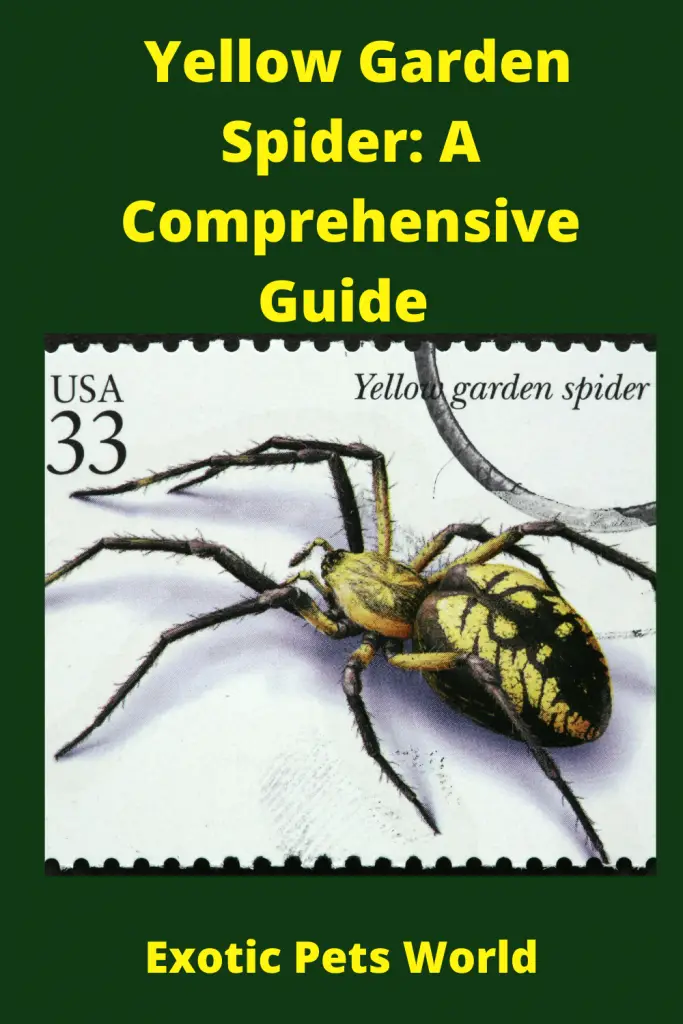
Are Yellow Garden Spiders Beneficial?
Yes, yellow garden spiders can be beneficial–especially if you want a pet spider. It’s best to leave them alone though and not handle the female garden spiders that are guarding eggs! Male garden spiders might sometimes choose shady spots near plants too so it’s important to make sure there aren’t any tall ivy-covered plants indoors or outside your home either. These could give males a place to hide from predators which is why females usually stretch across nearby branches when they’re in search of prey. Females will also often stay close by their egg sacs which means gardeners should avoid any vegetation with high ground cover around its base since these provide a perfect habitat for male garden spiders as well!
Are Garden Spiders good for your Garden?
– Spiders are helpful around the garden because they control pests and help fertilize your plants with droppings.
– Females will stay close to their egg sac when you don’t disturb them–but males sometimes like to hide in shady spots near tall vegetation so gardeners should make sure there isn’t any groundcover at the base of these plants either or else this could be an easy place for male garden spiders to find a mate! Hiding nearby also gives garden spiders access to food as well which is another benefit that comes from being out in nature!
Are yellow garden spiders beneficial? Yes, yellow garden spiders can be beneficial–especially if you want a pet spider. It’s best to leave them alone though and not bother them.
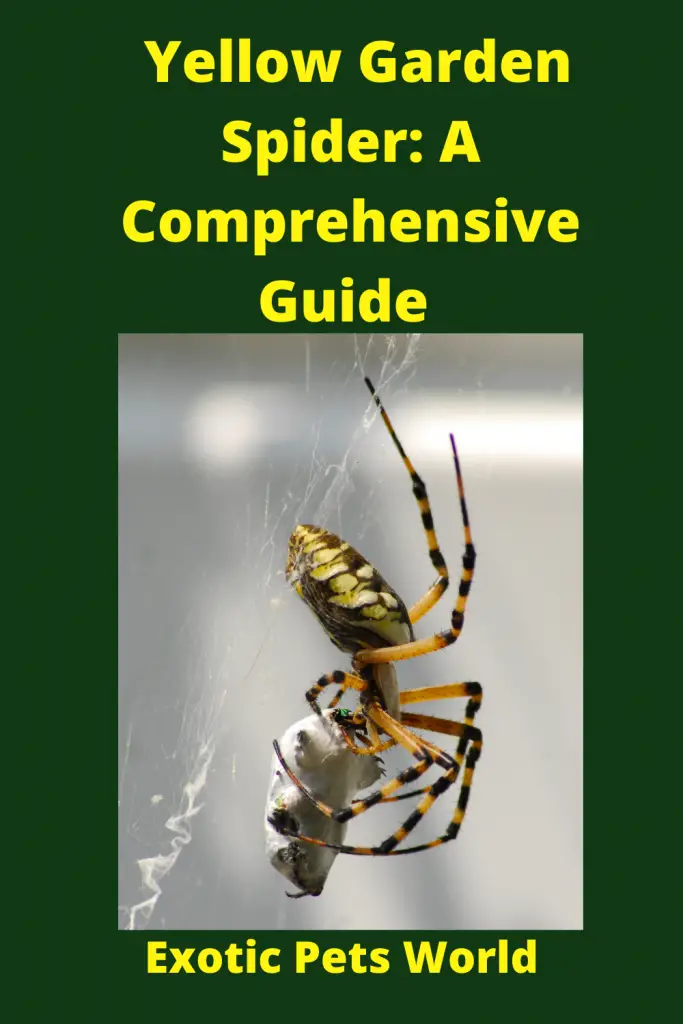
How do you get Rid of Garden Spiders?
– garden spiders can be helpful in your garden if they’re left alone but should be gotten rid of if you don’t want them around.
– yellow garden spiders are mostly harmless to pets and people, so it’s safe to leave them alone when not disturbing them. If there is no ground cover at the base of these plants then males might hide nearby looking for a mate which could lead to more spider bites or stings. You can remove their cover. Or Pesticides can be used to keep them managed.
Final Thoughts
Yellow Garden spiders are a type of spider that inhabits the garden, hence their name. They can be found in most temperate zones and love to eat other insects such as crickets or butterflies. These yellow garden spiders have two small eyes on top of its head with six smaller ones below them for detecting prey. There is little known about these creatures because they live deep within the ground where we cannot see them! Though there has been speculation that these could bite humans, it is uncommon given how shy they are when coming into contact with us. If you do happen to spot one though make sure not to approach too closely since this may lead them to become aggressive. You should also avoid getting bitten by wearing gloves if you need to work in your garden and have seen them there also.
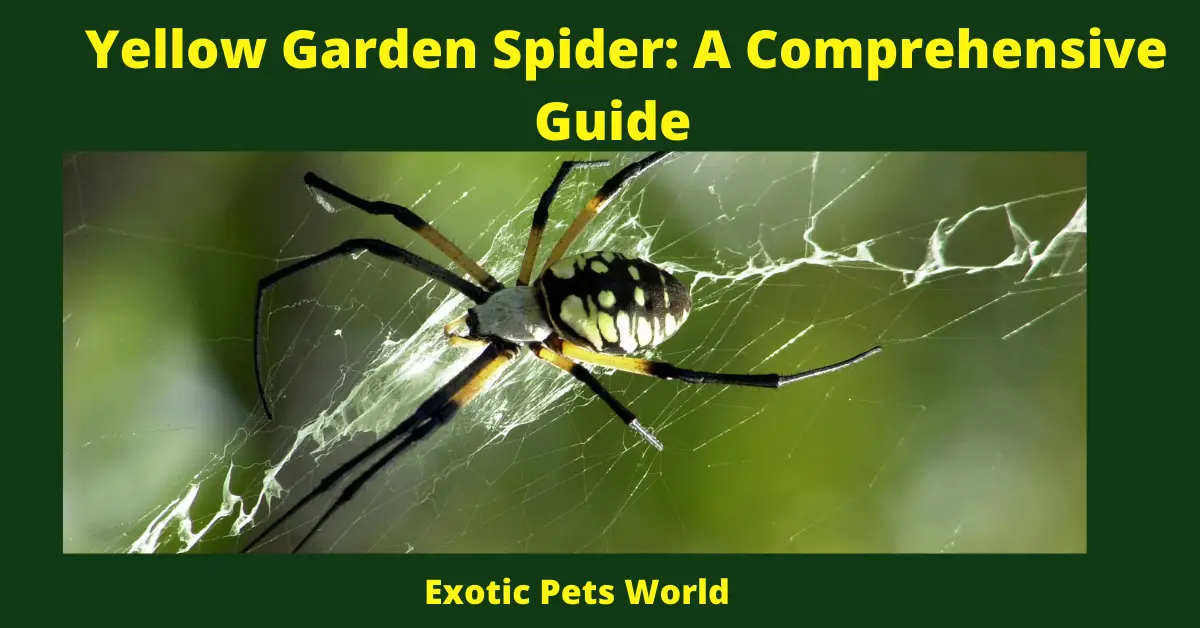

Your point of view caught my eye and was very interesting. Thanks. I have a question for you.
Lirigzon Gashi